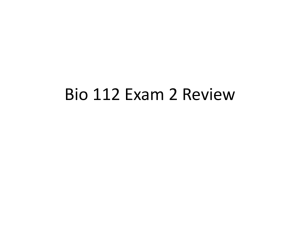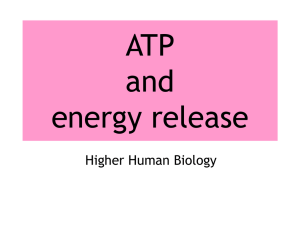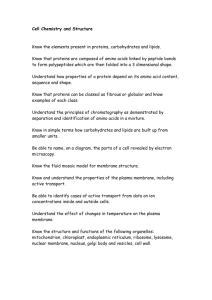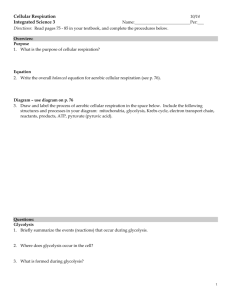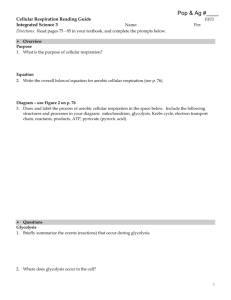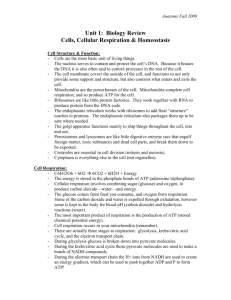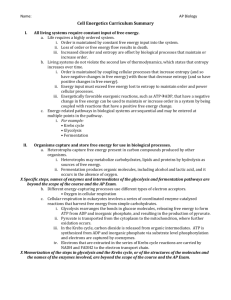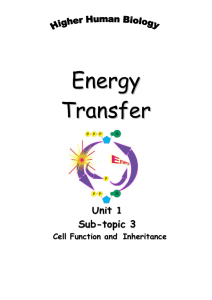Higher Biology - Anderson High School
advertisement
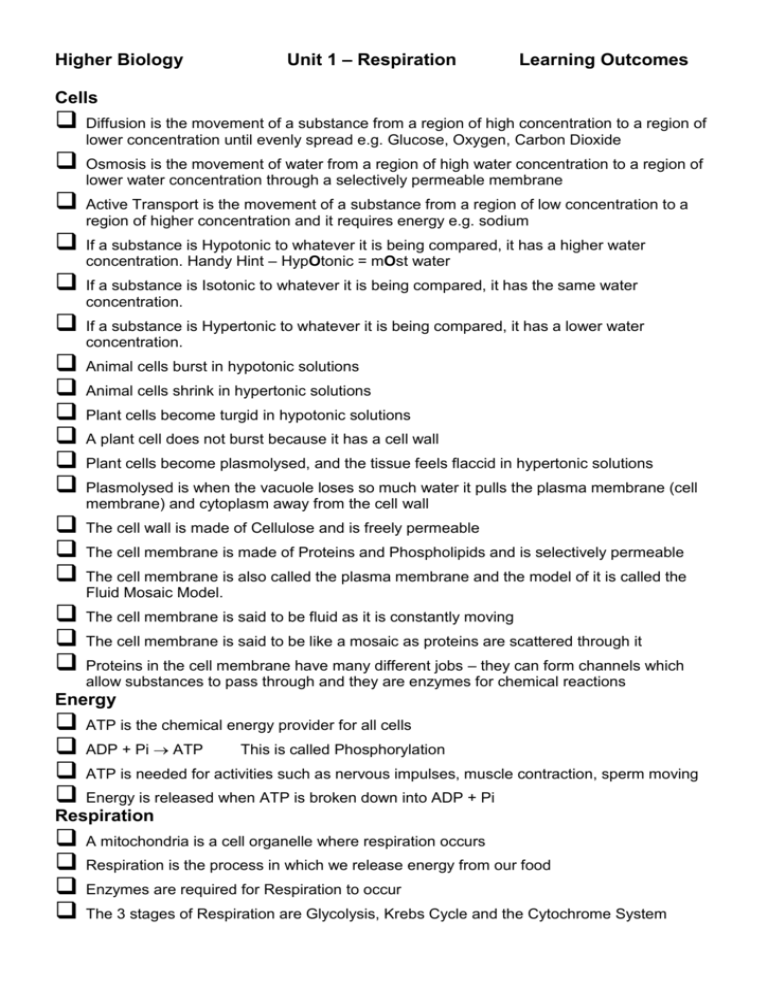
Higher Biology Unit 1 – Respiration Learning Outcomes Cells Diffusion is the movement of a substance from a region of high concentration to a region of lower concentration until evenly spread e.g. Glucose, Oxygen, Carbon Dioxide Osmosis is the movement of water from a region of high water concentration to a region of lower water concentration through a selectively permeable membrane Active Transport is the movement of a substance from a region of low concentration to a region of higher concentration and it requires energy e.g. sodium If a substance is Hypotonic to whatever it is being compared, it has a higher water concentration. Handy Hint – HypOtonic = mOst water If a substance is Isotonic to whatever it is being compared, it has the same water concentration. If a substance is Hypertonic to whatever it is being compared, it has a lower water concentration. Animal cells burst in hypotonic solutions Animal cells shrink in hypertonic solutions Plant cells become turgid in hypotonic solutions A plant cell does not burst because it has a cell wall Plant cells become plasmolysed, and the tissue feels flaccid in hypertonic solutions Plasmolysed is when the vacuole loses so much water it pulls the plasma membrane (cell membrane) and cytoplasm away from the cell wall The cell wall is made of Cellulose and is freely permeable The cell membrane is made of Proteins and Phospholipids and is selectively permeable The cell membrane is also called the plasma membrane and the model of it is called the Fluid Mosaic Model. The cell membrane is said to be fluid as it is constantly moving The cell membrane is said to be like a mosaic as proteins are scattered through it Proteins in the cell membrane have many different jobs – they can form channels which allow substances to pass through and they are enzymes for chemical reactions Energy ATP is the chemical energy provider for all cells ADP + Pi ATP This is called Phosphorylation ATP is needed for activities such as nervous impulses, muscle contraction, sperm moving Energy is released when ATP is broken down into ADP + Pi Respiration A mitochondria is a cell organelle where respiration occurs Respiration is the process in which we release energy from our food Enzymes are required for Respiration to occur The 3 stages of Respiration are Glycolysis, Krebs Cycle and the Cytochrome System The Respiration helpline Phone Number is – 632-65444 Glycolysis is an Anaerobic Process as no oxygen is required. Glycolysis occurs in the cytoplasm of a cell 2 ATP are need for Glycolysis and 4 ATP are produced, so there is a net gain of 2 ATP In Glycolysis, Glucose is broken down into Pyruvic Acid. NAD is the hydrogen carrier and it carries the Hydrogen to the Cristae Instead of Glucose, Fats and Proteins can be used as alternative respiratory substrates Krebs Cycle is an Aerobic Process so it requires oxygen The Krebs Cycle occurs in the central matrix of a mitochondrion In the Krebs Cycle, the following conversions occur Pyruvic AcidAcetyl Co ACitric AcidInt 5CInt 4CInt 4CInt 4C Hydrogen is produced and combines with the carrier NAD and is taken to the cristae of a mitochondria for the Cytochrome System Carbon Dioxide is released in the Krebs Cycle The Cytochrome system occurs in the cristae of a mitochondrion. The Cytochrome system is an Aerobic Stage as oxygen is required 36 ATP are generated in the Cytochrome system Hydrogen is passed through a series of reactions and the final hydrogen acceptor is oxygen Hydrogen and oxygen combine together to make water If Anaerobic Respiration is occurring, only Glycolysis will occur and only 2 ATP will be gained If Aerobic Respiration is occurring, Glycolysis, Krebs Cycle and the Cytochrome System will occur and a total of 38 ATP will be produced.
